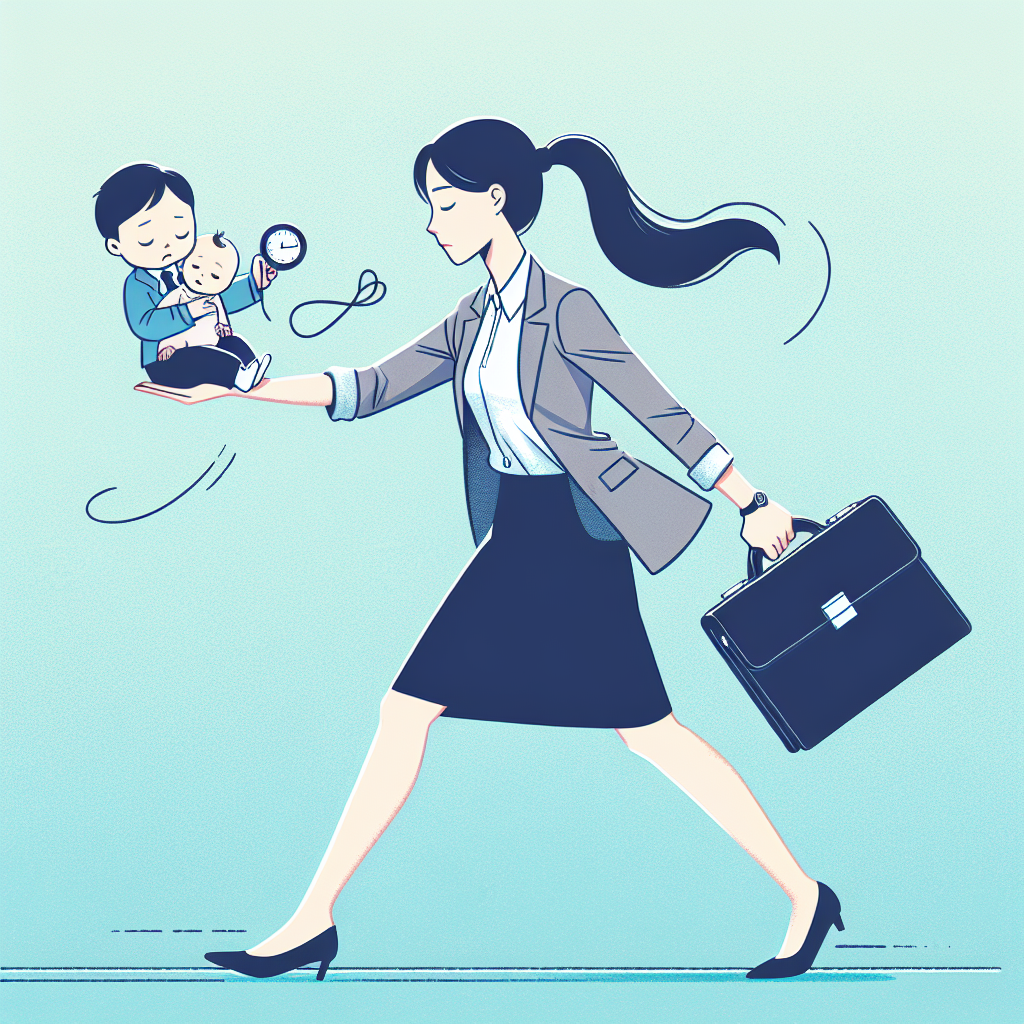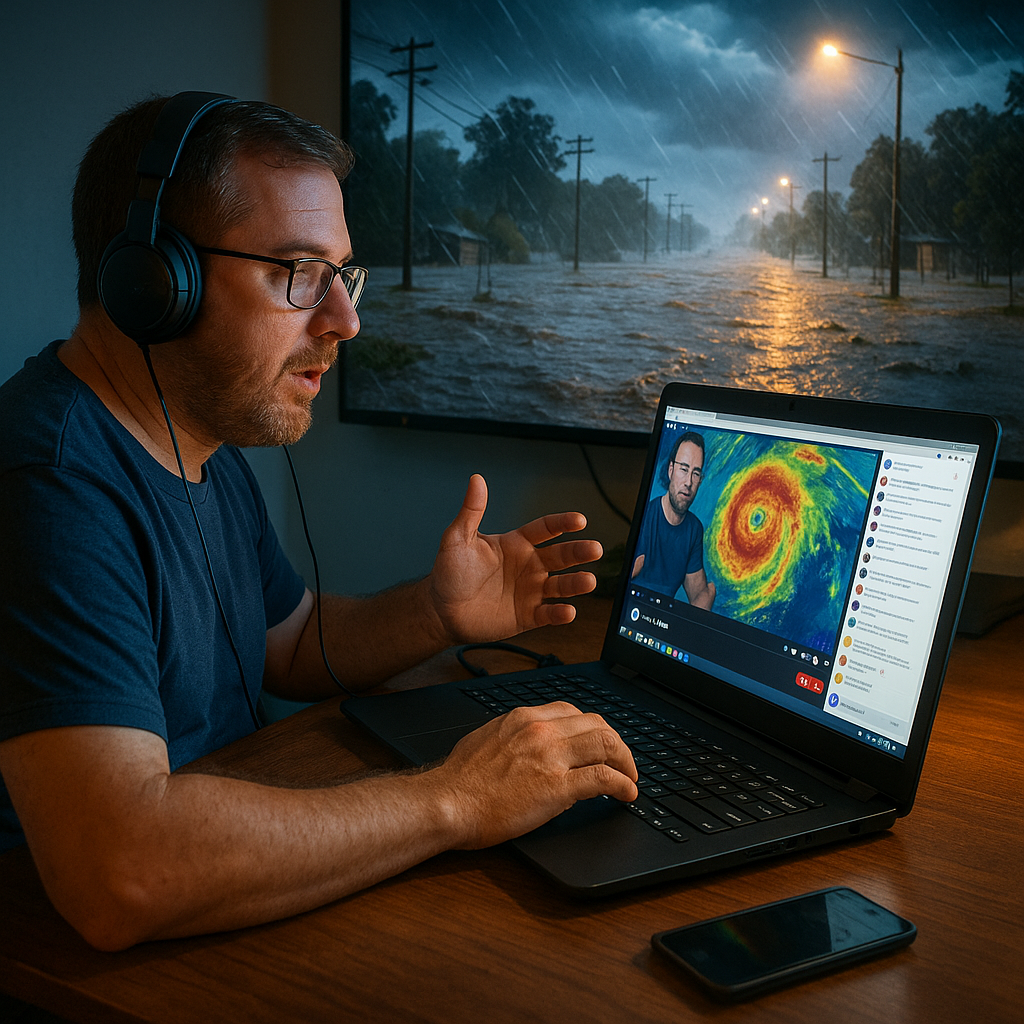A new map has been made that shows how areas with fewer trees in cities have more pollution and worse air quality. The map was made by the Woodland Trust, American Forests, and the Centre for Sustainable Healthcare. It uses information from Google and other sources to give a “tree equity score” for different neighborhoods in the UK. This score shows how much more trees are needed in an area. The map shows that poorer areas have less trees and more pollution compared to richer areas. Places with more trees have less pollution and are cooler during hot weather.
It’s a worry that there aren’t enough trees in urban areas because it affects people’s health and well-being. Trees are really important for making the air cleaner and reducing pollution. They also give shade and help keep things cooler when it’s hot. But right now, richer areas have more trees and green spaces, which isn’t fair. This makes social inequalities worse and means that people in poorer areas don’t get the benefits of trees.
The people who made the map hope that it will make policymakers think about planting more trees in cities. They say that trees should be seen as important as things like electricity and water, and that everyone should have the right to have trees around them. In the US, a similar project called “tree equity” has led to trees being planted in poorer areas and creating jobs for local people.
Some councils in the UK, like Birmingham and Belfast, are already thinking about the link between trees and poverty in their plans. The people who made the map hope that the tree equity score will help all councils know where to plant trees first. The aim is to make a healthier and fairer environment for everyone.
At Lowfield Primary School in Sheffield, the kids have planted a rowan tree in their playground to help with air pollution. The students know how important trees are for making the air cleaner and they want to see more trees in their area. This is a small step in the right direction, but more needs to be done to make sure that all communities can enjoy the benefits of trees.
Original news source: Air pollution: map shows ‘concrete jungles’ more polluted (BBC)
Listen:
Slow
Normal
Fast
Vocabulary:
| 1 | pollution | Dirty air or water that is harmful to people and the environment |
| 2 | neighborhoods | Areas where people live, usually in a city or town |
| 3 | equity | Fairness and equal treatment for everyone |
| 4 | well-being | The state of being happy, healthy, and comfortable |
| 5 | shade | A dark area where the sun is blocked by something |
| 6 | social inequalities | Unfair differences between different groups of people in society |
| 7 | policymakers | People who make decisions and laws for a country or city |
| 8 | councils | Groups of people who make decisions for a local area |
| 9 | poverty | The state of being extremely poor |
| 10 | environment | The natural world and the surroundings in which living beings exist |
| 11 | primary school | A school for young children, usually between the ages of 5 and 11 |
| 12 | playground | An outdoor area where children can play |
| 13 | communities | Groups of people who live in the same area or have something in common |
| 14 | benefits | The good things that come from something |
| 15 | enjoy | To have fun or take pleasure in something |
Group or Classroom Activities
Warm-up Activities:
– News Summary
Instructions: Divide the class into pairs or small groups. Give each group a few minutes to read the article. Then, ask them to summarize the main points of the article in their own words. Each group can take turns sharing their summaries with the rest of the class.
– Vocabulary Pictionary
Instructions: Write down key vocabulary words from the article on separate index cards or pieces of paper. Divide the class into two teams. One person from each team comes to the front of the class and chooses a word. Without speaking, they have to draw a picture to represent the word while their team tries to guess what it is. The team that guesses correctly gets a point.
– Pros and Cons
Instructions: Divide the class into pairs or small groups. Give each group a few minutes to discuss and write down the pros and cons of planting more trees in urban areas. Then, ask each group to share their ideas with the rest of the class. Encourage a class discussion and debate about the benefits and potential drawbacks of increasing tree coverage in cities.
– Think-Pair-Share
Instructions: Ask the class to think about and write down their personal opinions on the importance of trees in urban areas. Then, have them pair up with a partner and share their thoughts. After a few minutes, ask a few pairs to share their opinions with the rest of the class. Encourage a respectful and open discussion about different viewpoints.
– Future Predictions
Instructions: Have the class imagine what their city or neighborhood would look like in the future if more trees were planted. Ask them to write or discuss their predictions, considering how the environment, air quality, and quality of life might change. After some time, ask a few students to share their predictions with the rest of the class.
Comprehension Questions:
1. What does the new map show about areas with fewer trees in cities?
2. Who made the map that shows the “tree equity score” for different neighborhoods in the UK?
3. How do trees affect people’s health and well-being?
4. Why is it considered unfair that richer areas have more trees and green spaces?
5. What do the people who made the map hope policymakers will do?
6. How has the “tree equity” project in the US benefited poorer areas?
7. Which councils in the UK are already considering the link between trees and poverty?
8. What small step has been taken at Lowfield Primary School in Sheffield to combat air pollution?
Go to answers ⇩
Listen and Fill in the Gaps:
A new map has been made that shows how areas with fewer (1)______ in cities have more pollution and worse air quality. The map was made by the Woodland Trust, American Forests, and the Centre for Sustainable Healthcare. It uses information from Google and (2)______ sources to give a “tree (3)______ score” for different (4)______ in the UK. This score shows how much more trees are needed in an area. The map shows that poorer areas have less trees and more pollution compared to richer areas. Places with more trees have less pollution and are cooler during hot (5)______.
It’s a worry that there aren’t enough trees in urban areas because it affects people’s health and well-being. Trees are really important for (6)______ the air cleaner and reducing pollution. They also give shade and help keep things cooler when it’s hot. But right now, richer areas have more trees and green spaces, which isn’t fair. This makes social inequalities worse and (7)______ that people in poorer areas don’t get the (8)______ of trees.
The people who made the map hope that it will make policymakers think about (9)______ more trees in (10)______. They say that trees should be seen as (11)______ as things like electricity and water, and that everyone should have the right to have trees around them. In the US, a (12)______ project called “tree equity” has led to trees being planted in poorer areas and creating jobs for local people.
Some councils in the UK, like Birmingham and Belfast, are already thinking about the link between trees and poverty in their plans. The people who made the map hope that the tree equity score will help all (13)______ know where to plant trees first. The aim is to make a healthier and fairer environment for everyone.
At Lowfield (14)______ School in Sheffield, the kids have (15)______ a rowan tree in their (16)______ to help with air pollution. The students know how important trees are for making the air cleaner and they want to see more trees in their area. This is a small step in the right direction, but more needs to be done to make sure that all communities can enjoy the benefits of trees.
Go to answers ⇩
Discussion Questions:
Students can ask a partner these questions, or discuss them as a group.
1. What is a “tree equity score” and why is it important?
2. How do trees help make the air cleaner and reduce pollution?
3. Why is it unfair that richer areas have more trees and green spaces?
4. How do trees provide shade and help keep things cooler during hot weather?
5. Do you think everyone should have the right to have trees around them? Why or why not?
6. How do you think planting more trees in cities could improve people’s health and well-being?
7. What do you think policymakers can do to ensure that trees are planted in all neighborhoods?
8. How do you think planting trees in poorer areas could create jobs for local people?
9. Do you think your city or town has enough trees? Why or why not?
10. How would you feel if a rowan tree was planted in your school or neighborhood to help with air pollution?
11. Do you like spending time in green spaces with trees? Why or why not?
12. How do you think having more trees in urban areas could improve the environment?
13. What do you think are some challenges in planting more trees in cities?
14. How could planting trees in poorer areas help reduce social inequalities?
15. Do you think it’s important for schools to teach students about the importance of trees and the environment? Why or why not?
Individual Activities
Vocabulary Meanings:
Match each word to its meaning.
Words:
1. pollution
2. neighborhoods
3. equity
4. well-being
5. shade
6. social inequalities
7. policymakers
8. councils
9. poverty
10. environment
11. primary school
12. playground
13. communities
14. benefits
15. enjoy
Meanings:
(A) Unfair differences between different groups of people in society
(B) Dirty air or water that is harmful to people and the environment
(C) A school for young children, usually between the ages of 5 and 11
(D) The state of being happy, healthy, and comfortable
(E) To have fun or take pleasure in something
(F) The natural world and the surroundings in which living beings exist
(G) The state of being extremely poor
(H) Areas where people live, usually in a city or town
(I) People who make decisions and laws for a country or city
(J) Fairness and equal treatment for everyone
(K) A dark area where the sun is blocked by something
(L) Groups of people who live in the same area or have something in common
(M) The good things that come from something
(N) An outdoor area where children can play
(O) Groups of people who make decisions for a local area
Go to answers ⇩
Multiple Choice Questions:
1. What organizations made the new map that shows the link between trees and pollution?
(a) The United Nations, Greenpeace, and the World Health Organization
(b) The Environmental Protection Agency, National Geographic, and the Sierra Club
(c) The Red Cross, Greenpeace, and the World Wildlife Fund
(d) The Woodland Trust, American Forests, and the Centre for Sustainable Healthcare
2. What does the “tree equity score” show?
(a) How many trees are already in an area
(b) How much pollution is in an area
(c) How many people live in an area
(d) How much more trees are needed in an area
3. According to the map, which areas have less trees and more pollution?
(a) Richer areas
(b) Poorer areas
(c) Rural areas
(d) Coastal areas
4. Why are trees important in urban areas?
(a) They provide shade and keep things cooler in hot weather
(b) They improve people’s health and well-being
(c) They make the air cleaner and reduce pollution
(d) All of the above
5. What do the people who made the map hope policymakers will do?
(a) Provide more electricity and water
(b) Plant more trees in cities
(c) Reduce social inequalities
(d) Create jobs for local people
6. Which councils in the UK are already considering the link between trees and poverty?
(a) Birmingham and Belfast
(b) London and Manchester
(c) Edinburgh and Glasgow
(d) Cardiff and Swansea
7. What is one small step that has been taken to help with air pollution in Sheffield?
(a) Building a new school
(b) Installing air purifiers in homes
(c) Planting a rowan tree in a playground
(d) Creating more green spaces
8. What is the aim of the tree equity score?
(a) To create a healthier and fairer environment for everyone
(b) To increase social inequalities
(c) To provide more jobs for local people
(d) To reduce pollution in rural areas
Go to answers ⇩
True or False Questions:
1. The map reveals that wealthier areas have fewer trees and more pollution compared to poorer areas.
2. Areas with more trees have less pollution and are cooler during hot weather.
3. The abundance of trees in urban areas negatively impacts people’s health and well-being.
4. A new map has been created that shows how areas with fewer trees in cities have more pollution and worse air quality.
5. The tree equity score shows how much fewer trees are needed in an area.
6. The people who made the map hope it will encourage policymakers to plant more trees in cities and view trees as important as things like electricity and water.
7. The map uses misinformation from Google and other sources to give a “tree equity score” for different neighborhoods in the UK.
8. The map was made by the Woodland Trust, American Forests, and the Centre for Sustainable Healthcare.
Go to answers ⇩
Write a Summary:
Write a summary of this news article in two sentences.
Check your writing now with the best free AI for English writing!
Writing Questions:
Answer the following questions. Write as much as you can for each answer.
Check your answers with our free English writing assistant!
1. What does the new map show about areas with fewer trees in cities?
2. Why are trees important for people’s health and well-being?
3. What is the problem with the distribution of trees in urban areas right now?
4. What do the people who made the map hope will happen as a result of their findings?
5. How are some councils in the UK already considering the link between trees and poverty in their plans?
Answers
Comprehension Question Answers:
1. The new map shows that areas with fewer trees in cities have more pollution and worse air quality.
2. The map was made by the Woodland Trust, American Forests, and the Centre for Sustainable Healthcare.
3. Trees help make the air cleaner and reduce pollution. They also provide shade and help keep things cooler during hot weather, which can improve people’s health and well-being.
4. It is considered unfair that richer areas have more trees and green spaces because it worsens social inequalities. People in poorer areas do not get the benefits of trees, such as cleaner air and cooler temperatures.
5. The people who made the map hope that policymakers will plant more trees in cities. They believe that trees should be seen as important as things like electricity and water, and that everyone should have the right to have trees around them.
6. The “tree equity” project in the US has led to trees being planted in poorer areas, which has created jobs for local people.
7. Some councils in the UK, like Birmingham and Belfast, are already considering the link between trees and poverty in their plans.
8. At Lowfield Primary School in Sheffield, the students have planted a rowan tree in their playground to help with air pollution.
Go back to questions ⇧
Listen and Fill in the Gaps Answers:
(1) trees
(2) other
(3) equity
(4) neighborhoods
(5) weather
(6) making
(7) means
(8) benefits
(9) planting
(10) cities
(11) important
(12) similar
(13) councils
(14) Primary
(15) planted
(16) playground
Go back to questions ⇧
Vocabulary Meanings Answers:
1. pollution
Answer: (B) Dirty air or water that is harmful to people and the environment
2. neighborhoods
Answer: (H) Areas where people live, usually in a city or town
3. equity
Answer: (J) Fairness and equal treatment for everyone
4. well-being
Answer: (D) The state of being happy, healthy, and comfortable
5. shade
Answer: (K) A dark area where the sun is blocked by something
6. social inequalities
Answer: (A) Unfair differences between different groups of people in society
7. policymakers
Answer: (I) People who make decisions and laws for a country or city
8. councils
Answer: (O) Groups of people who make decisions for a local area
9. poverty
Answer: (G) The state of being extremely poor
10. environment
Answer: (F) The natural world and the surroundings in which living beings exist
11. primary school
Answer: (C) A school for young children, usually between the ages of 5 and 11
12. playground
Answer: (N) An outdoor area where children can play
13. communities
Answer: (L) Groups of people who live in the same area or have something in common
14. benefits
Answer: (M) The good things that come from something
15. enjoy
Answer: (E) To have fun or take pleasure in something
Go back to questions ⇧
Multiple Choice Answers:
1. What organizations made the new map that shows the link between trees and pollution?
Answer: (d) The Woodland Trust, American Forests, and the Centre for Sustainable Healthcare
2. What does the “tree equity score” show?
Answer: (d) How much more trees are needed in an area
3. According to the map, which areas have less trees and more pollution?
Answer: (b) Poorer areas
4. Why are trees important in urban areas?
Answer: (c) They make the air cleaner and reduce pollution
5. What do the people who made the map hope policymakers will do?
Answer: (b) Plant more trees in cities
6. Which councils in the UK are already considering the link between trees and poverty?
Answer: (a) Birmingham and Belfast
7. What is one small step that has been taken to help with air pollution in Sheffield?
Answer: (c) Planting a rowan tree in a playground
8. What is the aim of the tree equity score?
Answer: (a) To create a healthier and fairer environment for everyone
Go back to questions ⇧
True or False Answers:
1. The map reveals that wealthier areas have fewer trees and more pollution compared to poorer areas. (Answer: False)
2. Areas with more trees have less pollution and are cooler during hot weather. (Answer: True)
3. The abundance of trees in urban areas negatively impacts people’s health and well-being. (Answer: False)
4. A new map has been created that shows how areas with fewer trees in cities have more pollution and worse air quality. (Answer: True)
5. The tree equity score shows how much fewer trees are needed in an area. (Answer: False)
6. The people who made the map hope it will encourage policymakers to plant more trees in cities and view trees as important as things like electricity and water. (Answer: True)
7. The map uses misinformation from Google and other sources to give a “tree equity score” for different neighborhoods in the UK. (Answer: False)
8. The map was made by the Woodland Trust, American Forests, and the Centre for Sustainable Healthcare. (Answer: True)
Go back to questions ⇧













